CEO Libby Wadle on the Course J. Crew Is Charting
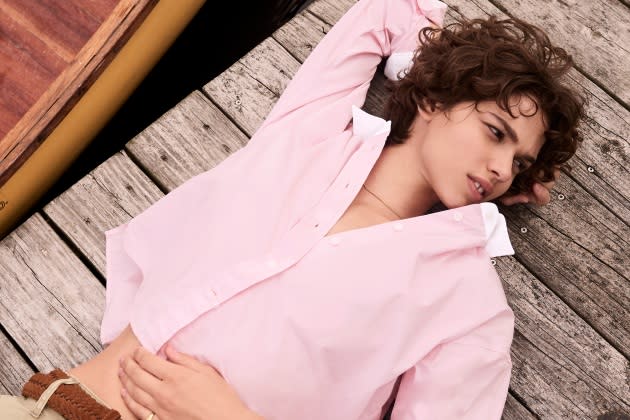
In its journey to get back on everybody’s radar and reconnect with customers, J. Crew is giving people something to talk about again.
The J. Crew Group, parent of the J. Crew, Madewell and Crewcuts brands, has been streamlined, profitability has been restored, creative ranks replenished, and targeted investments are being made in technology, omni-capabilities, refreshing stores, and to some extent, in catalogues again.
More from WWD
With any brand turnaround, getting the balance sheet back in order is just part of the challenge. The other part is getting the buzz back. J. Crew still has fans across generations and is a brand that never gets ignored. But it hasn’t quite recaptured the level of customer loyalty, repeat shopping, and the cool factor it once had.
It all started dropping off about eight years ago through a series of fashion misfires; a string of chief executive officer changes and strategic flip-flops, and an aborted attempt at an initial public offering of the-then high-flying Madewell brand due to the impact of COVID-19 and a determination that J. Crew, saddled with huge debt, wouldn’t survive on its own. The group filed Chapter 11 in April 2020 and four months later, through a debt-for-equity swap, emerged from the bankruptcy with almost all of its $1.7 billion of debt wiped out and with Anchorage Capital Group LLC as majority owner.
In November 2020, Libby Wadle, a longtime J. Crew and Madewell executive, became CEO of J. Crew Group, charged with navigating the company through the pandemic, reviving J. Crew and reigniting Madewell’s growth.
“It’s been an incredible two years for me. We have been investing in the brands in a way that, especially on the J. Crew side, needed to be done. That means talent and really putting creative and design at the forefront of everything we do,” Wadle told WWD. “It’s a refresh, not a reinvention; an evolution, not a transformation” through a creative lens asserting “the J. Crew heritage made modern.”
In an interview at JCG’s headquarters in Manhattan’s Brookfield Place, Wadle discussed how the company is changing, how it’s performing, and where it’s investing, particularly at J. Crew.
“It’s funny,” Wadle said. “We have come back around to being ourselves but in a way that feels very modern. When we talk about J. Crew we talk about that perfect balance, with heritage made modern, and ultimately getting J. Crew back to its rightful place as a great American brand but in a way that doesn’t just look backward, but is rooted in our heritage, while pushing forward and remaining relevant and current. It doesn’t mean repeating best sellers or doing what we have always done. We have always been our best when we provide inspiration and aspiration. It’s about honoring our roots and our past, and certainly recognizing that we have classics that need to always be in the line, that are evergreen.
“There is this emotional connection to the J. Crew brand. Frankly, that’s why I have been here for 18 years,” Wadle added. “Our journey in the past two years has been reestablishing that connection, first with our current customers and reawakening that spirit and appreciation, and at the same time opening ourselves up and becoming relevant to new people.”
Next year, when J. Crew celebrates its 40th birthday, it will be an occasion to shine a light on the changes and project a richer expression of the brand. “You will get a clear story,” Wadle said. “Storytelling is in our DNA.”
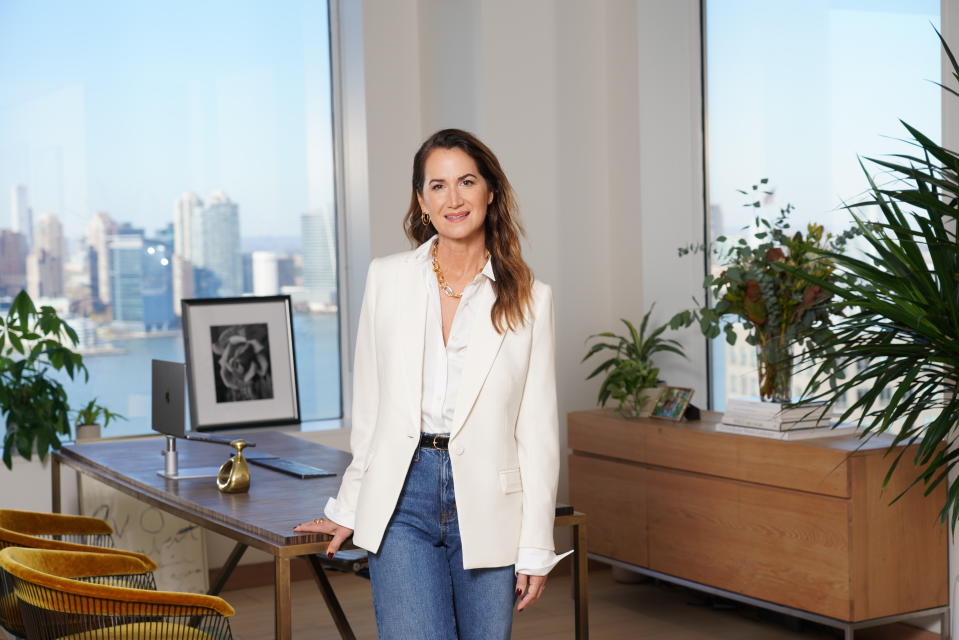
As J. Crew has long done, “hero” products like the Giant Fit chino, the relaxed Kenmare suit, and plush cashmere sweater remain central. So does elevating the profiles of creative directors Brendon Babenzien, on the men’s side, and Olympia Gayot on the women’s and kids’ sides, through blogs and social media, reminiscent of how former creative directors Frank Muytjens and Jenna Lyons were once celebrated.
“Honestly there are things we should never touch and then there are workhorses for us — a great fitting men’s chino. We had an incredible win this year with our Giant Fit chino,” said Wadle. “That doesn’t mean we lose the 484,” slim fit. “Brendon has real understanding and respect for how a guy wants to dress.
“Cashmere is so important and spans the ages. It’s not about a demographic,” Wadle added. “It’s the idea of luxury and quality and really being a destination for your classics in cashmere in an incredible color palette. J. Crew is famous for and will get even more famous for cashmere.”
She said cashmere, in men’s and women’s, and dresses and soft tailoring pieces in women’s are selling well.
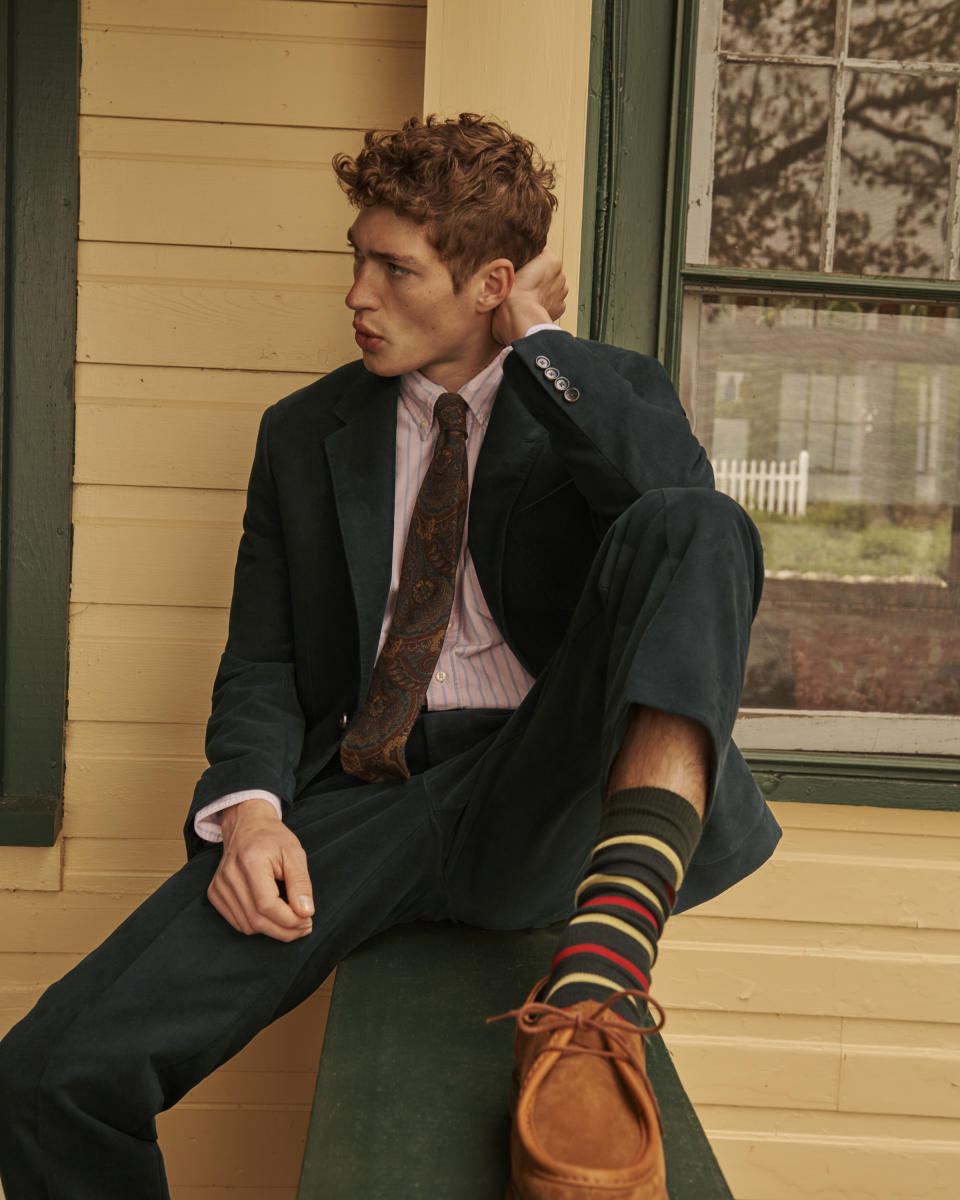
Wadle also cited “a pretty major rebound and recovery in our suiting business.” J. Crew suits, like the Ludlow and the Kenmare, have captured much attention, though there’s some question to what extent suits should be spotlighted in an age of casualization and work-at-home lifestyles.
“Our brand isn’t defined by suits alone,” Wadle said. “But people do want to get dressed up again. Are people wearing full suits to work anymore? No. But that was never the bread and butter of our business anyway. The componentry is much more who J. Crew is. We do have an incredible seasonal suit business, when you think about occasions and weddings and events like that, or a herringbone sport coat, that kind of thing is great.”
While bridal has been eliminated from the collection, J. Crew is “for sure a destination for best-dressed guests, like at a wedding. We lean into it.”
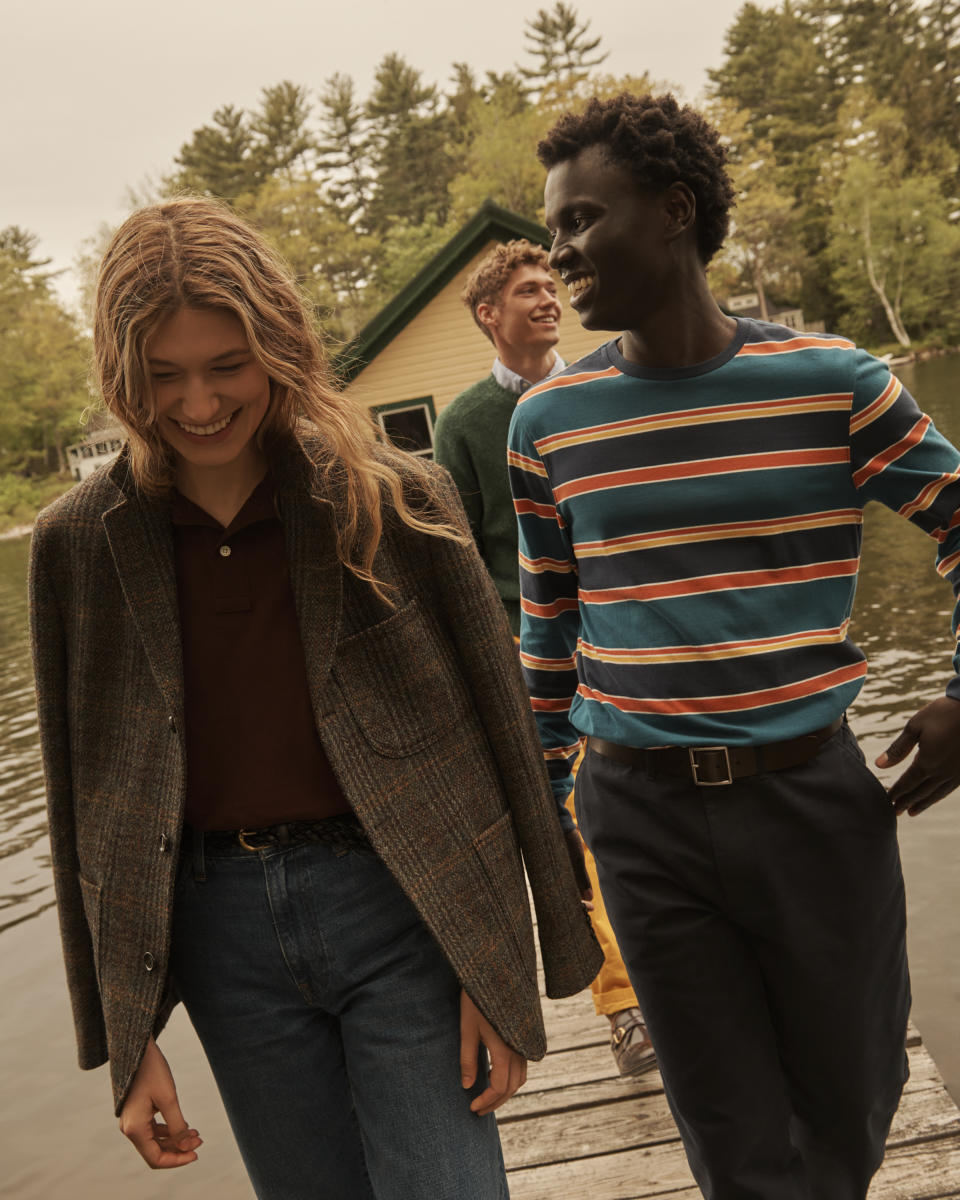
J. Crew was a pioneer in brand collaborations, originally with Alden, the British men’s footwear brand. J. Crew this year tied in with Tracksmith for singlets, sweatpants, quarter-zips, long-sleeve T-shirts, turtlenecks and hoodies.
“Brendon is a runner,” said Wadle. “He feels very strongly that running is very much a part of a lot of people’s lives. There is real nice affinity with that brand, just like we have a great collaboration with New Balance.” J. Crew also sells pickle ball clothing and a limited-edition Recess pickle ball paddle.
While active is integral elsewhere, “It’s not going to be a meaningful part of our business,” Wadle said. “It’s not what we do best. It’s a crowded market. Are there components that make sense within our collection? For sure, especially when you think of a Madewell woman there is componentry that makes sense and we will always lean in that way, but it’s more about outfitting. We are in a lot of categories already and should continue to do what we do best. Denim remains a core focus for Madewell. We’re making sure everything we say at Madewell is really around how you wear your jeans. That means categories that complement that. Every girl, every woman, wants to wear her cool jeans with an oversized blazer.” At Crew, “We have a good denim business. I would say right now we are living through an incredible nondenim pant cycle which is right in J. Crew’s sweet spot.”
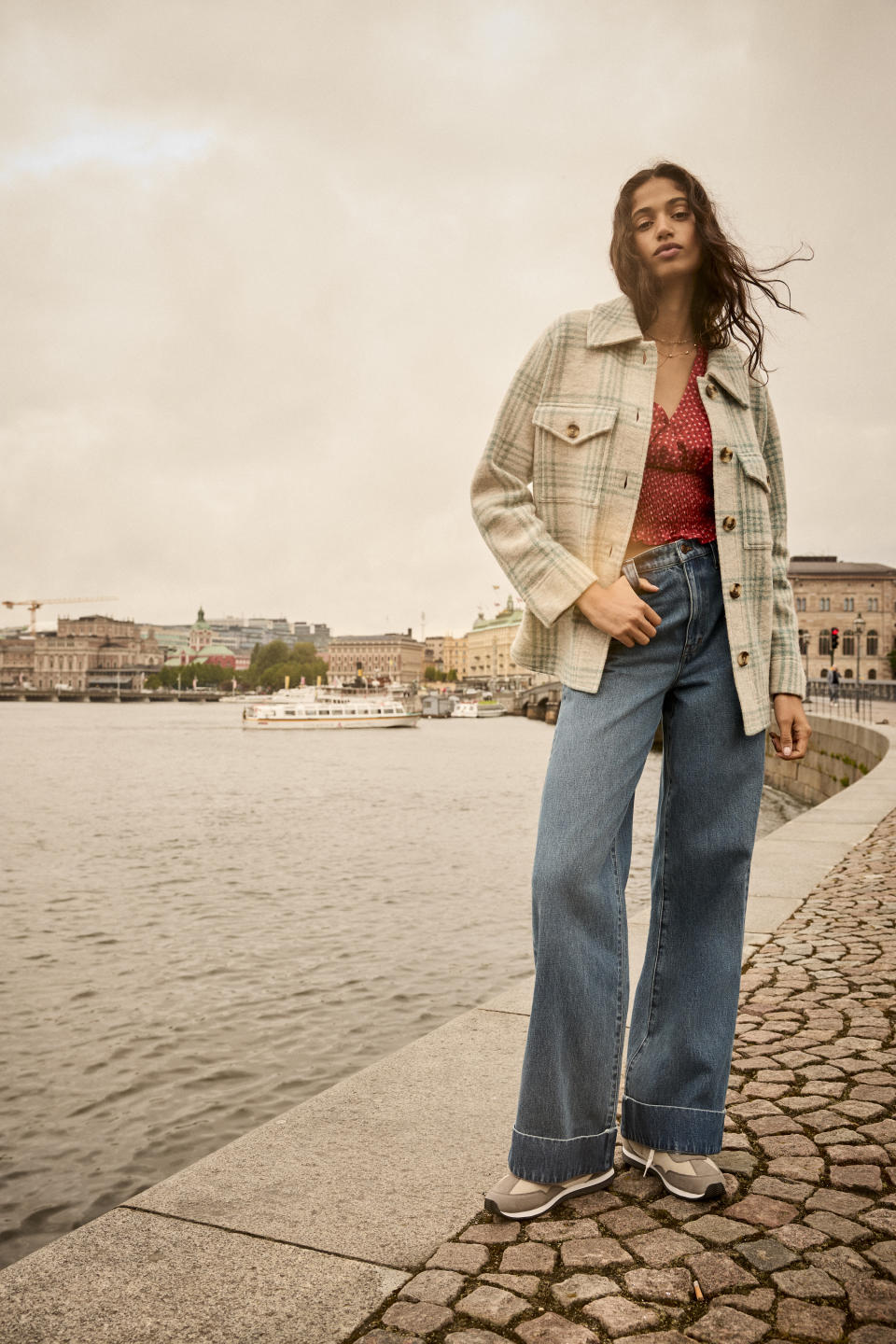
Collaborations, Wadle said, are “design-led, not marketing-led. The 40th will provide us with a lot of opportunity to collaborate. We have a storied history of incredible artists and creatives who have worked on our catalogue and have been part of the brand.”
Asked if the group was accelerating collaborative efforts, Wadle replied, “I’d say we are bringing it back. We had to reestablish our design point of view, especially on the J. Crew side. That was the most important thing. Collaborations have to have real meaning for what we are designing.” J. Crew also collaborated with Beams Plus, the Japanese label which reworks classic Americana, and Madewell just launched a collaboration with Donni, a laid-back L.A. brand known for knitwear.
J. Crew’s fleet of retail stores was pared down from more than 200, to 127. “The best representation of the brand needs to be in the stores,” Wadle said. “It’s how we are merchandising the stores today. It’s how we are thinking about investment in our stores. We have a smaller footprint, but these stores are in our best markets. We will invest in them to make sure they feel really fresh. What we have done at the Bowery [the new men’s store on the Bowery and Bleecker Street in Manhattan] is an initial step to refresh our experience. Everything is brought to life in that store in a way that sometimes other stores don’t.
“J. Crew stores could use a little love, but we’re not talking about a major renovation project. We are at the point in the evolution where we want to make sure our experience online and in stores really connect to each other and our ‘heritage-made-modern’ lens translates to the store experience as well. We think we have endless opportunity with our stores. I don’t mean opening up tons of stores. It means investing in the experience at our current stores. For sure, we will be opportunistic opening stores. We will look at a few opportunities for pop-up concepts, or if there is a neighborhood we should be in,” with a permanent store. “We are certainly looking at the Los Angeles area where we could have a little more density.”
At Madewell, the brick-and-mortar story is different. There are 140 stores and plans for about 10 openings annually, with the latest opened last month in Hoboken, New Jersey. “Madewell is an incredible denim destination,” said Wadle. “We sell new leg shapes across the country. Everyone is looking to refresh their jeans. There is just something so cool and effortless about the brand. It fits so many different types of people. It gives some towns across the country this cool downtown vibe.”
Years ago, J. Crew had a special place in fashion — a niche between luxury and mainstream, a blend of whimsy, preppy, classic and colorful items mixing patterns and prints, never too trendy, more a melange of items rather than a cohesive collection in the traditional sense. The aura was amplified by a cadre of colorful creatives led for about a decade and a half by Millard “Mickey” Drexler, who founded Madewell, and Old Navy when he was at Gap Inc., as well as designers Lyons and Muytjens.
Now, said Wadle, with Babenzien and Gayot, there’s “strong design leadership in place really helping to set our concept, our point of view, and our story from the beginning. Frankly, what you have seen starting this fall, and continuing into our 40th year, is a very clear story we are telling with our product that feels more collection-oriented than what you are articulating, and we will always have the whimsy and the novelty.”
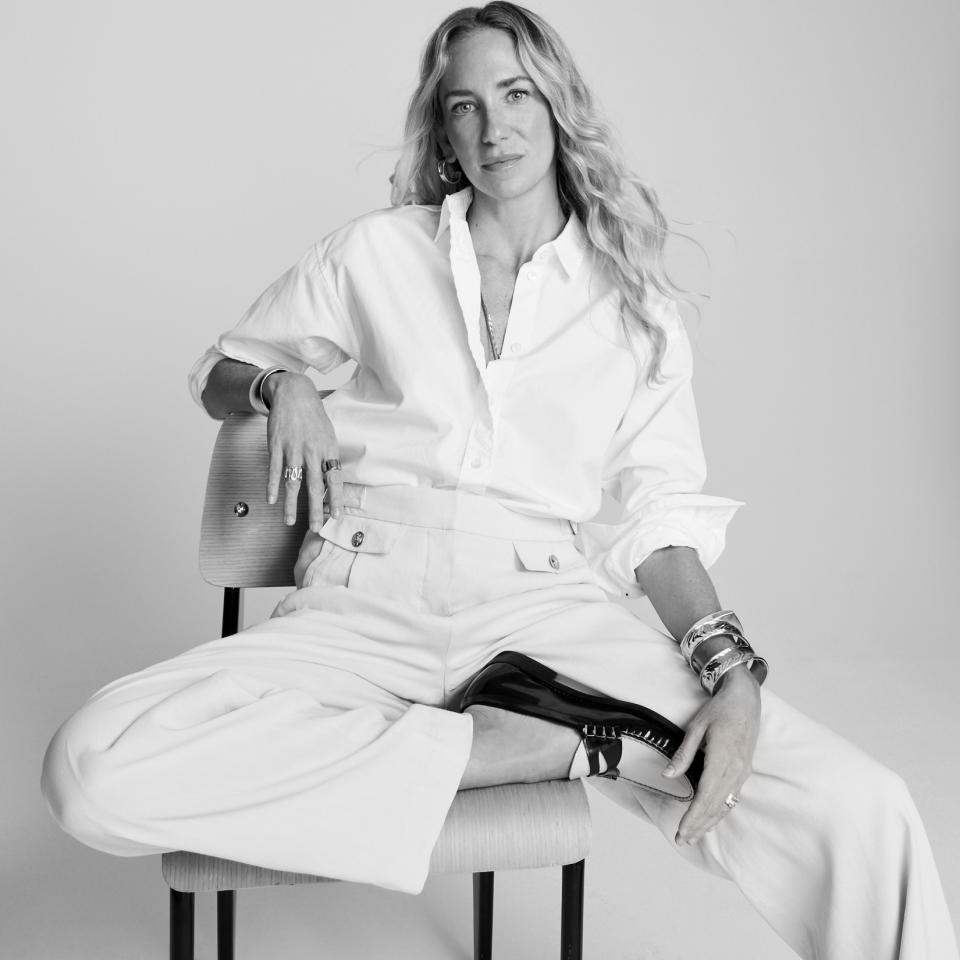
J. Crew was founded in 1983 as a catalogue, and for decades was an evocative expression of the brand that generated significant volume and was just fun to peruse. “We definitely stopped doing catalogues. We used to do 13,” said Wadle. “We’ve had a few this year and plan to do more next year. There’s exciting stuff happening next year around the 40th birthday that involves print. I can’t totally tip my hand on it.”
Wadle said the catalogue serves as “an inspiration tool. It’s really our style guide. It’s going to play a role, though not nearly of the magnitude” of the past. “We are testing lots of different formats.”
Bigger investments are in technology. “We have been able to do a full tech roadmap,” said Wadle. “Our tech strategy has really focused on the customer and advanced analytics — we implemented a next-generation customer data platform and have been working to evolve our tech stack around the customer to enable more real-time customer intelligence, more seamless omnichannel experiences such as BOPIS (buy online, pick up in store), including same-day pickup, and a lot of enhancements to our membership programs: Madewell Insider and J. Crew Passport. Additionally, we have introduced AI (artificial intelligence) to power experiences around styling, search and personalization. And we introduced a mobile app for Madewell driving more convenience. We’ve been able to drive urgency with app-only exclusives and offers.”
After dropping the Madewell IPO plan, there was a recentralizing of sorts, achieving synergies. Danielle Schmelkin, former chief information officer for Madewell, rose to chief information officer for the group. Derek Yarbrough, former chief marketing officer at Madewell, became chief marketing officer for both Madewell and J. Crew, and Liz Hershfield became senior vice president for sustainability at J. Crew, Madewell and J. Crew Factory.
“People were really excited about coming back together and collaborating where it made sense,” Wadle said. “At the same time, we have a real appreciation for the distinctiveness of each brand, because I have worked for and led both brands.” Was there ever a blurring of the brands? “I don’t know. It’s all history now. I’m sure at some point,” Wadle said. “Anything the customer sees, touches and hears is always distinct,” while back-of-house functions and services can be jointly managed.
“We are doing well. We are growing,” Wadle said, when asked how the company was performing. “We are seeing traction and buzz and energy in a way that we haven’t seen in many, many years. I am happy with our growth and our financials. I’m also thrilled with the narrative happening today.”
Asked if the company makes money, she replied: “Oh yes. We are in a great position financially, we are in a position to invest, and so we feel really well positioned for growth today and also we are thinking very long term. We want to see sustained and consistent growth. We are definitely back capturing market share.”
The company generated $1.9 billion in volume in 2019, and according to sources has a healthy EBIT (earnings before interest and taxes). The company, being privately owned, does not divulge any financial figures.
“When you cut through it all, it’s a profitable machine built on a promotional model,” said a retail executive who has been close to J. Crew. “I believe they have leveraged their size and scale and sourcing to make a lot of money, even on promotion because they shed a lot of debt. Everything is done on sale. They are very happy with this model. You can’t fault it. It makes money for them. They have volume. They have distribution. A good sourcing strategy, and margin built in up front. They have a loyal customer when they offer an incentive. Customers feel good when it’s 50 percent off.
“When we think about brands, you think about positioning, aspiration and desire. With heavy promotion, it’s a hard road back to capture that again. Fashion people are not talking about J. Crew as a go-to brand the way they used to. They are still more excited about Madewell. Libby drove that. She was a star at Madewell. She’s balanced in her perspective. She’s a good merchant and knows how to build a good team.”
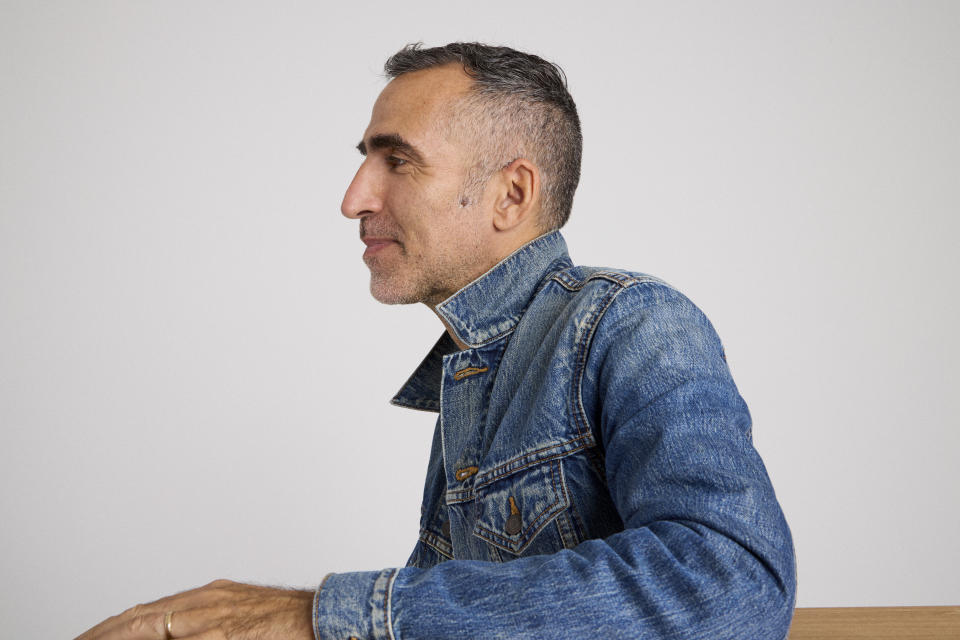
So what about toning down the price promoting? “Our work is not done on that,” said Wadle. “At the end of the day, what we have been able to do this year on the J. Crew side is decrease the level of discounting. That said, I think mostly, as you lean into the brand, as you lean into bringing back brand love and brand heat and brand energy, and you are not leading with discount at every turn, that goes a long way, so you are no longer being defined as a brand that is on discount. It just dilutes the brand. You want people to think about J. Crew first for its design, its inspiration, its quality, and listen, if we were sitting here last year for this interview, I don’t think anyone would have anticipated where we are today in terms of this environment. Having all of that said, we are doing a great job leaning into the brand.”
“We like what we’re seeing so far under the creative direction of Olympia and Brendon,” said Leslie Ghize, executive vice president of Doneger Group and its Tobe unit. “We see enormous potential for the brand to create new energy and relevance when translated to the shopping experience through fresh collaborations, activations and execution with the fluidity and flexibility retail demands today.
“There are movements working in their favor right now — a long-arching classicism in design and trend, a nostalgia for the brand as seen in the Instagram account @lostjcrew, a refining of streetwear and active, and maybe most importantly, a pan-consumerism in shopping patterns. By pan-consumerism, we mean the universality of generations’ interests and behaviors. J. Crew can leverage the cross-generational appeal and ‘love brand’ status they’ve earned by simply attracting brand enthusiasts, rather than targeting any specific demographic.”
“Libby has been a steadying force after so much turnover, because she knows the business, the brand, the heritage, what has worked and hasn’t worked,” added Kirk Palmer of Kirk Palmer & Associates executive search. “There were four CEO changes in about five years, but the business has been stabilized.”
“They’re reworking the essentials — the cashmere, the jackets, the dresses, some wardrobe building blocks,” observed one creative executive at a major brand. “They’re not stretching themselves too thin. By putting their designers front and center, and focusing on those hero products, infusing collaborations and not being focused on changing everything, I believe they are on a very good road for a comeback. They create a cultural excitement around a single item. People are buying looks, not looking so much at cohesive collections. They’re doing items that could fit into a lot of people’s wardrobes.”
Others see too much reliance on the tried and true, and playbooks from the past. “It’s a business coated in commercialism with more retail maneuvers than brand impressions,” said one retail consultant. “Maybe that’s what the new team inherited and is working through. So it may be a waiting game.”
“Remember when Banana Republic shut down and overnight took the jeeps and the safari look out? Or how about Kohl’s bringing in Sephora. Those were bold moves. I’m not seeing bold moves at J. Crew,” said Ray Graj, owner/principal at Graj + Gustavsen branding firm. “The world is moving fast. There is no time for half measures. There are things you could be testing that won’t break the bank. When you are promotional it’s a reflection of a lack of core ideas and lack of identity. It doesn’t help tell a brand story.”
“It’s no secret that I’ve been around for awhile, about 18 years,” Wadle said. “I have seen a lot and I have also watched from the sidelines when I wasn’t a part of J. Crew. I know this brand thrives and frankly all of our brands thrive. This place is about creativity and storytelling and letting our customers be inspired by that and maybe that took a back seat in some ways for many reasons.”
J. Crew has had quality issues, though Wadle said sustainability is “foundational” and ensures products are made to last, despite higher supply chain and material costs. “Olympia and Brendon lead with intention. They have a very keen eye for quality. We have some new leadership in over the past few years that are helping to evolve our quality standards. I feel really good about where we are. We did work on cashmere and really feel great about the longevity of our yarns. We can stand behind how we are sourcing ethically and that goes back to this Good Cashmere Standard. It goes back to the farm level where our yarns are coming from.” When you think about Madewell, Wadle said, the raison d’être is “premium quality jeans and not at a premium price.”
Are people coming back to J. Crew stores? “We are absolutely seeing people come back to the brand and we are definitely seeing it in the stores. It’s exciting. We measure it. We know what our comps are. It’s a relevant brand again.”

